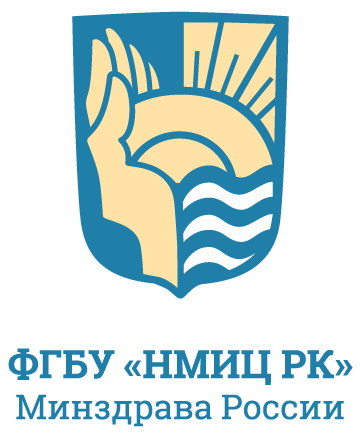Выпуск 24-5, 2025
Обзорная статья
Возможности использования клеточного секретома для стимуляции регенерации мягких тканей: обзор
![]() Ерёмин П.С. 1,*,
Ерёмин П.С. 1,*,
![]() Рожкова Е.А. 1,
Рожкова Е.А. 1,
![]() Гильмутдинова И.Р. 2
Гильмутдинова И.Р. 2
1 Национальный медицинский исследовательский центр реабилитации и курортологии Минздрава России, Москва, Россия
2 Национальный медицинский исследовательский центр терапии и профилактической медицины Минздрава России, Москва, Россия
РЕЗЮМЕ
ВВЕДЕНИЕ. Клеточный секретом (КС) представляет собой сложную смесь биоактивных молекул, выделяемых клетками при культивировании in vitro, и рассматривается как многообещающий инструмент в создании тканеинженерных конструкций для повышения эффективности регенерации твердых и мягких тканей. В состав КС входят цитокины, факторы роста, хемокины, ферменты, экзосомы, внеклеточные везикулы и т. д. Эти паракринные факторы, секретируемые клетками, играют решающую роль в модулировании различных клеточных процессов, таких как воспаление, ангиогенез и ремоделирование внеклеточного матрикса. Высокая биологическая активность и способность модулировать клеточные реакции делают КС перспективной альтернативой как традиционной медикаментозной терапии, так и немедикаментозным формам лечения с использованием трансплантации стволовых клеток.
ЦЕЛЬ. Характеристика текущего состояния исследований по применению клеточного секретома для стимуляции процессов регенерации поврежденных тканей.
МАТЕРИАЛЫ И МЕТОДЫ. Обзор литературных данных проводился по базам данных PubMed, BioRxiv и ScienceDirect. Даты запросов: июнь–август 2025 г., глубина запроса — 2020–2025 гг.
ОСНОВНОЕ СОДЕРЖАНИЕ ОБЗОРА. Использование технологий биоинженерии и клеточных технологий для эффективной стимуляции процессов регенерации поврежденной ткани возможно только при комплексном междисциплинарном подходе. К настоящему времени исследовано большинство компонентов КС, регулирующих регенерацию мягких и твердых тканей. Описаны механизмы, с помощью которых КС оказывает свое действие, а также различные типы и составы секретомов, используемых в тканевой инженерии. Представлены результаты лабораторных исследований и результаты клинического применения КС, иллюстрирующие практическую пользу и эффективность немедикаментозной терапии на основе КС. Кроме того, в обзоре дана оценка существующим ограничениям в практическом применении секретома, как, например, вариабельность состава и нежелательные иммунные реакции, а также рассматривается стратегия повышения его терапевтического потенциала.
ЗАКЛЮЧЕНИЕ. Таким образом, достижения и открытия в области экспериментальной и регенеративной медицины формируют направления будущих исследований, включая необходимость стандартизации методов производства и дальнейшего изучения механизмов действия КС. Интеграция клеточных метаболитов в тканеинженерные конструкции позволит повысить эффективность восстановления поврежденных мягких тканей и сократит период восстановления у пациентов.
КЛЮЧЕВЫЕ СЛОВА: клеточный секретом, тканеинженерные конструкции, регенеративная медицина
ДЛЯ ЦИТИРОВАНИЯ:
Ерёмин П.С., Рожкова Е.А., Гильмутдинова И.Р. Возможности использования клеточного секретома для стимуляции регенерации мягких тканей: обзор. Вестник восстановительной медицины. 2025; 24(5): 106-112. https://doi.org/10.38025/2078-1962-2025-24-5-106-112 [Eremin P.S., Rozhkova E.A., Gilmutdinova I.R. Possibilities of Using Cellular Secretome to Stimulate Soft Tissue Regeneration: a Review. Bulletin of Rehabilitation Medicine. 2025; 24(5): 106-112. https://doi.org/10.38025/2078-1962-2025-24-5-106-112 (In Russ.).]
ДЛЯ КОРРЕСПОНДЕНЦИИ:
Ерёмин Петр Серафимович, E-mail: ereminps@gmail.com, ereminps@nmicrk.ru
Список литературы:
- Mazini L., Rochette L., Admou B., et al. Hopes and Limits of Adipose-Derived Stem Cells (ADSCs) and Mesenchymal Stem Cells (MSCs) in Wound Healing. International journal of molecular sciences. 2020; 21(4): 1306. https://doi.org/10.3390/ijms21041306
- Lin H., Chen H., Zhao X., et al. Advances in mesenchymal stem cell conditioned medium-mediated periodontal tissue regeneration. Journal of translational medicine. 2021; 19(1): 456. https://doi.org/10.1186/s12967-021-03125-5
- Caramelo I., Domingues C., Mendes V.M., et al. Readaptation of mesenchymal stem cells to high stiffness and oxygen environments modulate the extracellular matrix. bioRxiv. 2024; 2024.08.26.609692. https://doi.org/10.1101/2024.08.26.609692
- Lai J.J., Chau Z.L., Chen S.Y., et al. Exosome Processing and Characterization Approaches for Research and Technology Development. Adv Sci (Weinh). 2022; (15): e2103222. https://doi.org/10.1002/advs.202103222
- Ding T., Ge S. Metabolic regulation of type 2 immune response during tissue repair and regeneration. J Leukoc Biol. 2022; 112(5): 1013–1023. https://doi.org/10.1002/JLB.3MR0422-665R
- Gawriluk T.R., Simkin J., Hacker C.K., et al. Complex tissue regeneration in mammals is associated with reduced inflammatory cytokines and an influx of T-cells. Front Immunol. 2020; 11: 1695. https://doi.org/10.3389/fimmu.2020.01695
- Huang J., Sati S., Murphy C., et al. Granulocyte colony stimulating factor promotes scarless tissue regeneration. Cell Rep. 2024; 43(10): 114742. https://doi.org/10.1016/j.celrep.2024.114742
- Drobiova H., Sindhu S., Ahmad R., et al. Wharton’s jelly mesenchymal stem cells: a concise review of their secretome and prospective clinical applications. Front. Cell Dev. Biol. 2023; 11: 1211217. https://doi.org/10.3389/fcell.2023.1211217
- Heissig B., Nishida C., Tashiro Y., et al. Role of neutrophil-derived matrix metalloproteinase-9 in tissue regeneration. Histol Histopathol. 2010; 25(6): 765–70. https://doi.org/10.14670/HH-25.765
- Karamanos N.K., Theocharis A.D., Piperigkou Z., et al. A guide to the composition and functions of the extracellular matrix. The FEBS journal. 2021; 288(24): 6850–6912. https://doi.org/10.1111/febs.15776
- Lee J.H., Won Y.J., Kim H., et al. Adipose tissue-derived mesenchymal stem cell-derived exosomes promote wound healing and tissue regeneration. Int. J. Mol. Sci. 2023; 24(13): 10434. https://doi.org/10.3390/ijms241310434
- Kim H., Kim D., Kim W., et al. Therapeutic Strategies and Enhanced Production of Stem Cell-Derived Exosomes for Tissue Regeneration. Tissue engineering. Part B, Reviews. 2023; 29(2): 151–166. https://doi.org/10.1089/ten.TEB.2022.0118
- Hu W., Wang W., Chen Z., et al. Engineered exosomes and composite biomaterials for tissue regeneration. Theranostics. 2024; 14(5): 2099–2126. https://doi.org/10.7150/thno.93088
- Khalatbary A.R. Stem cell-derived exosomes as a cell free therapy against spinal cord injury. Tissue & cell. 2021; 71: 101559. https://doi.org/10.1016/j.tice.2021.101559
- Kalluri R., LeBleu V.S. The biology, function, and biomedical applications of exosomes. Science (New York, N.Y.). 2020; 367(6478): eaau6977. https://doi.org/10.1126/science.aau6977
- Kalluri R. The biology and function of extracellular vesicles in immune response and immunity. Immunity. 2024; 57(8): 1752–1768. https://doi.org/10.1016/j.immuni.2024.07.009
- Rädler J., Gupta D., Zickler A., Andaloussi S.E. Exploiting the biogenesis of extracellular vesicles for bioengineering and therapeutic cargo loading. Molecular therapy: the journal of the American Society of Gene Therapy. 2023; 31(5): 1231–1250. https://doi.org/10.1016/j.ymthe.2023.02.013
- Sailliet N., Ullah M., Dupuy A., et al. Extracellular Vesicles in Transplantation. Frontiers in immunology. 2022; 13: 800018. https://doi.org/10.3389/fimmu.2022.800018
- Mallia A., Gianazza E., Zoanni B., et al. Proteomics of extracellular vesicles: update on their composition, biological roles and potential use as diagnostic tools in atherosclerotic cardiovascular diseases. Diagnostics (Basel). 2020; 19: 10(10): 843. https://doi.org/10.3390/diagnostics10100843
- Cano A., Ettcheto M., Bernuz M., et al. Extracellular vesicles, the emerging mirrors of brain physiopathology. Int J Biol Sci. 2023; 19(3): 721–743. https://doi.org/10.7150/ijbs.79063
- Tan Q., Xia D., Ying X. miR-29a in Exosomes from Bone Marrow Mesenchymal Stem Cells Inhibit Fibrosis during Endometrial Repair of Intrauterine Adhesion. Int. J. Stem Cells. 2020; 13:414–423. https://doi.org/10.15283/ijsc20049
- Song Y., You Y., Xu X., et al. Adipose-derived mesenchymal stem cell-derived exosomes biopotentiated extracellular matrix hydrogels accelerate diabetic wound healing and skin regeneration. Adv Sci (Weinh). 2023; 10(30): e2304023. https://doi.org/10.1002/advs.202304023
- Dai M., Zhang Y., Yu M., Tian W. Therapeutic applications of conditioned medium from adipose tissue. Cell Prolif. 2016; 49(5): 561–567. https://doi.org/10.1111/cpr.12281
- Laksmitawati D.R., Widowati W., Noverina R., et al. Production of Inflammatory Mediators in Conditioned Medium of Adipose Tissue-Derived Mesenchymal Stem Cells (ATMSC)-Treated Fresh Frozen Plasma. Medical science monitor basic research. 2022; 28: e933726. https://doi.org/10.12659/MSMBR.933726
- Yu T., Cui Y., Xin S., et al. Mesenchymal stem cell conditioned medium alleviates acute lung injury through KGF-mediated regulation of epithelial sodium channels. Biomed Pharmacother. 2023; 169: 115896. https://doi.org/10.1016/j.biopha.2023.115896
- Mehrabadi S., Motevaseli E., Sadr S.S., Moradbeygi K. Hypoxic-conditioned medium from adipose tissue mesenchymal stem cells improved neuroinflammation through alternation of toll like receptor (TLR) 2 and TLR4 expression in model of Alzheimer’s disease rats. Behavioural brain research. 2020; 379: 112362. https://doi.org/10.1016/j.bbr.2019.112362
- Wang Y., Wang X., Zou Z., Hu Y., Li S., Wang Y. Conditioned medium from bone marrow mesenchymal stem cells relieves spinal cord injury through suppression of Gal-3/NLRP3 and M1 microglia/macrophage polarization. Pathol Res Pract. 2023; 243: 154331. https://doi.org/10.1016/j.prp.2023.154331
- Li L., Ngo H.T.T., Hwang E., et al. Conditioned Medium from Human Adipose-Derived Mesenchymal Stem Cell Culture Prevents UVB-Induced Skin Aging in Human Keratinocytes and Dermal Fibroblasts. International journal of molecular sciences. 2019; 21(1): 49. https://doi.org/10.3390/ijms21010049
- Dong J., Wu Y., Zhang Y., Yu M., Tian W. Comparison of the Therapeutic Effect of Allogeneic and Xenogeneic Small Extracellular Vesicles in Soft Tissue Repair. International journal of nanomedicine. 2020; 15: 6975–6991. https://doi.org/10.2147/IJN.S269069
- Surico P.L., Scarabosio A., Miotti G., et al. Unlocking the versatile potential: Adipose-derived mesenchymal stem cells in ocular surface reconstruction and oculoplastics. World journal of stem cells. 2024; 16(2): 89–101. https://doi.org/10.4252/wjsc.v16.i2.89
- Zhang B., Wu Y., Mori M., et al. Adipose-Derived Stem Cell Conditioned Medium and Wound Healing: A Systematic Review. Tissue engineering. Part B, Reviews. 2022; 28(4): 830–847. https://doi.org/10.1089/ten.TEB.2021.0100
- Ma Z., Liu T., Liu L., et al. Epidermal Neural Crest Stem Cell Conditioned Medium Enhances Spinal Cord Injury Recovery via PI3K/AKT-Mediated Neuronal Apoptosis Suppression. Neurochemical research. 2024; 49(10): 2854–2870. https://doi.org/10.1007/s11064-024-04207-8
- Chen W., Sun Y., Gu X., et al. Conditioned medium of human bone marrow-derived stem cells promotes tendon-bone healing of the rotator cuff in a rat model. Biomaterials. 2021; 271: 120714. https://doi.org/10.1016/j.biomaterials.2021.120714
- Rosochowicz M.A., Lach M.S., Richter M., Suchorska W.M., Trzeciak T. Conditioned medium — Is it an undervalued lab waste with the potential for osteoarthritis management? Stem Cell Rev Rep. 2023; 19(5): 1185–1213. https://doi.org/10.1007/s12015-023-10517-1
- Behzadifard M., Aboutaleb N., Dolatshahi M., et al. Neuroprotective Effects of Conditioned Medium of Mesenchymal Stem Cells (MSC-CM) as a Therapy for Ischemic Stroke Recovery: A Systematic Review. Neurochemical research. 2023; 48(5): 1280–1292. https://doi.org/10.1007/s11064-022-03848-x
- Bray E.R., Oropallo A.R., Grande D.A., et al. Extracellular Vesicles as Therapeutic Tools for the Treatment of Chronic Wounds. Pharmaceutics. 2021; 13(10): 1543. https://doi.org/10.3390/pharmaceutics13101543
- Park K.S., Bandeira E., Shelke G.V., et al. Enhancement of therapeutic potential of mesenchymal stem cell-derived extracellular vesicles. Stem cell research & therapy. 2019; 10(1): 288. https://doi.org/10.1186/s13287-019-1398-3
- Pinheiro-Machado E., Koster C.C., Smink A.M. Modulating adipose-derived stromal cells’ secretomes by culture conditions: effects on angiogenesis, collagen deposition, and immunomodulation. Biosci Rep. 2025; 45(5): 325–342. https://doi.org/10.1042/bsr20241389
- Marvin J.C., Liu E.J., Chen H.H., et al. Proteins Derived From MRL/MpJ Tendon Provisional Extracellular Matrix and Secretome Promote Pro-Regenerative Tenocyte Behavior. bioRxiv. 2024; 2024.07.08.602500. https://doi.org/10.1101/2024.07.08.602500
- Haque N., Fareez I.M., Fong L.F., et al. Role of the CXCR4-SDF1-HMGB1 pathway in the directional migration of cells and regeneration of affected organs. World J Stem Cells. 2020; 12(9): 938–951. https://doi.org/10.4252/wjsc.v12.i9.938
- Hodge J.G., Decker H.E., Robinson J.L., Mellott A.J. Tissue-mimetic culture enhances mesenchymal stem cell secretome capacity to improve regenerative activity of keratinocytes and fibroblasts in vitro. Wound Repair Regen. 2023; 31(3): 367–383. https://doi.org/10.1111/wrr.13076
- Arifka M., Wilar G., Elamin K.M., Wathoni N. Polymeric hydrogels as mesenchymal stem cell secretome delivery system in biomedical applications. Polymers (Basel). 2022; 14(6): 1218. https://doi.org/10.3390/polym14061218
- Pranskunas M., Šimoliūnas E., Alksne M., et al. Assessment of the bone healing process mediated by periosteum-derived mesenchymal stem cells’ secretome and a xenogenic bioceramic — an in vivo study in the rabbit critical size calvarial defect model. Materials (Basel). 2021; 14(13): 3512. https://doi.org/10.3390/ma14133512
- Mocchi M., Bari E., Marrubini G., et al. Freeze-dried mesenchymal stem cell-secretome pharmaceuticalization: optimization of formulation and manufacturing process robustness. Pharmaceutics. 2021; 3(8): 1129. https://doi.org/10.3390/pharmaceutics13081129
- Hajisoltani R., Taghizadeh M., Hamblin M.R., Ramezani F. Could conditioned medium be used instead of stem cell transplantation to repair spinal cord injury in animal models? Identifying knowledge gaps. Journal of neuropathology and experimental neurology. 2023; 82(9): 753–759. https://doi.org/10.1093/jnen/nlad053

Контент доступен под лицензией Creative Commons Attribution 4.0 License.
©
Эта статья открытого доступа по лицензии CC BY 4.0. Издательство: ФГБУ «НМИЦ РК» Минздрава России.




